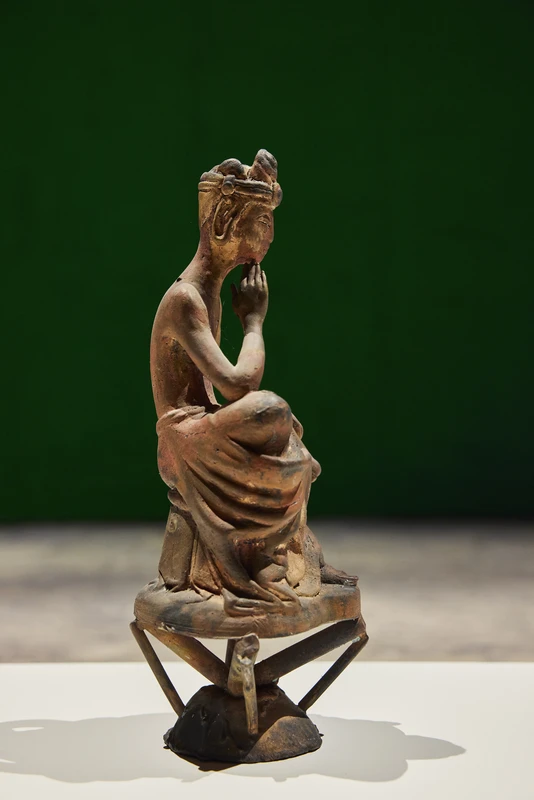Massimo Bartolini: Sparse Steps
1 Feb-8 Mar 2025
PV 31 Jan 2025, 6-8pm


Frith Street Gallery is delighted to announce an exhibition of new work by Massimo Bartolini.
Bartolini’s practice is defined by a diverse range of artistic languages and materials ranging from immersive installation, performance and audience engagement to drawing, sculpture and assemblage. The artist’s work consistently reconfigures the relationship between the exhibition space and the viewer, often acting as an invitation – to sit, to contemplate, to connect and to listen – while also offering unexpected aesthetic and sensory experiences.
Music has become a key preoccupation for Bartolini, manifested most ambitiously in the Italian Pavilion at La Biennale di Venezia (2024). Due qui / To Hear presented four new works that together created an ‘inhabitable’ musical organ which centralised collaborative listening as a way to connect with others, the exhibition space and the world around us.
In Sparse steps, the artist presents a single organ which runs the length of the gallery space, alongside a new series of wall-mounted ‘sound paintings.’ First shown in the Italian pavilion at La Biennale di Venezia, Pensive Bodhisattva on A Flat (2024) consists of a large organ pipe upon which sits a small statue of a Bodhisattva. In Buddhism, this figure represents a person who has reached the highest level of enlightenment but sacrifices their prize to help others do the same. It is an ‘embodiment of inactivity’ that prioritises thought over action. The organ pipe omits a single note, filling the gallery with a meditative drone, luring the viewer into a state of contemplation, slowing the passing of time.
Accompanying the single note of A flat, five sound paintings occupy the walls of the gallery. Each work omits a different chord, together creating a chord progression that can be reconfigured and improvised. For Bartolini however, these pieces are as much paintings as musical instruments. They are painted in monochrome with perforations across the surface that the artist describes not as holes, but ‘mouths’ through which air passes like a breath that, in this case, forms a note. Their palettes reflect the colours that musician Alexander Nikolayevich Scriabin assigned to notes in the late 19th century. For Bartolini, this coming together of paintings and musical instruments is an important unification, enabling what is typically only a visual experience to enter the field of sound.
The title of this exhibition references the studio album Giant Steps by John Coltrane. Widely considered one of the most influential jazz albums of all time, Coltrane’s chord progressions marked a pivot point in jazz culture and improvision. For his exhibition at Golden Square, Massimo Bartolini seeks to create his own space of both musical and aesthetic improvisation.
‘You put together two things that have not been together before. And the world has changed.’
– Levels of Life, Julian Barnes